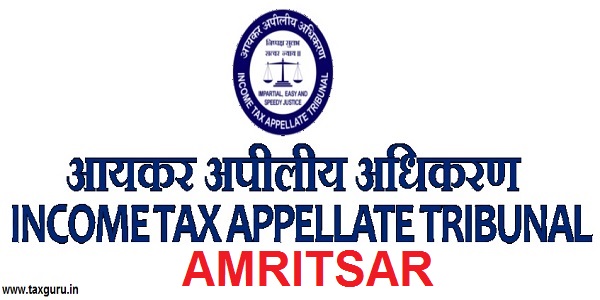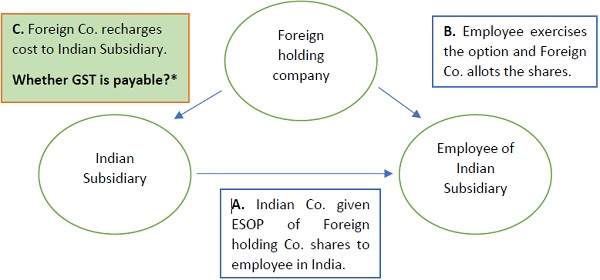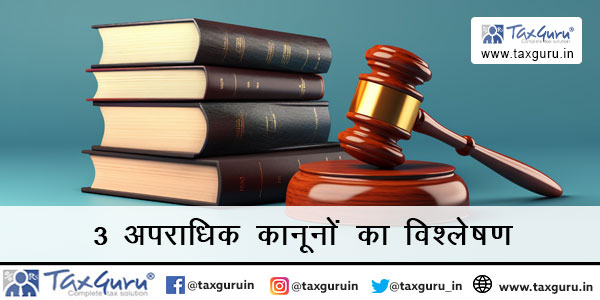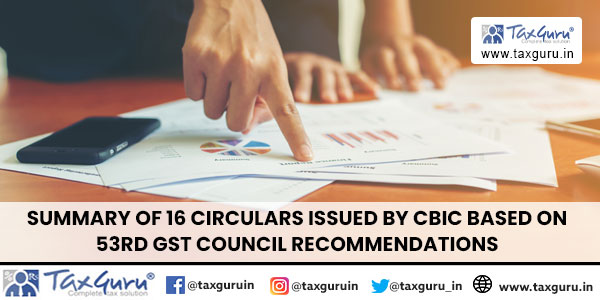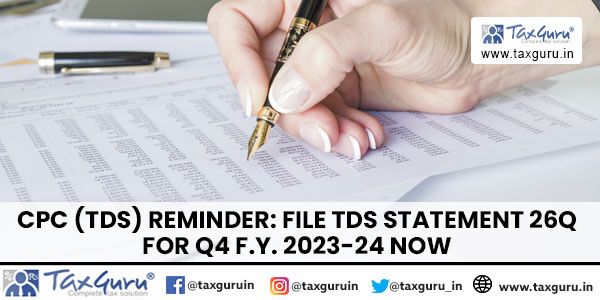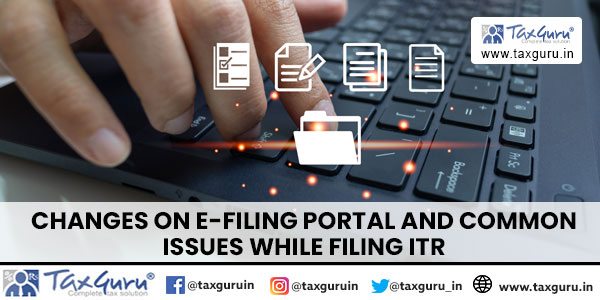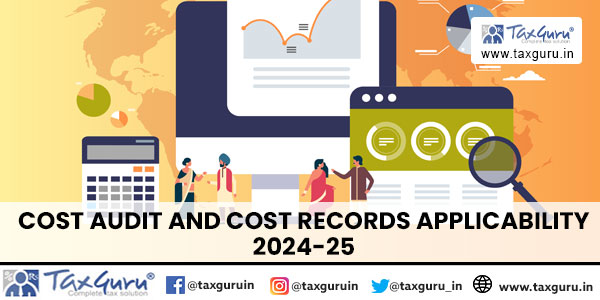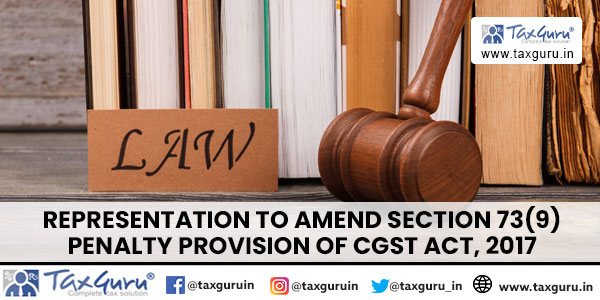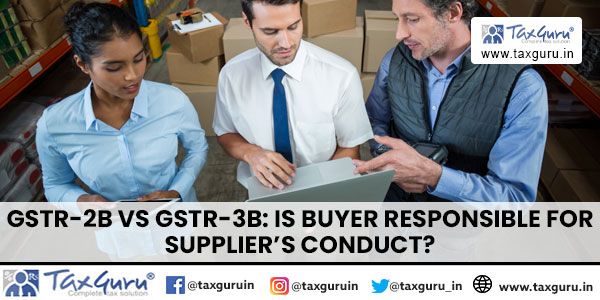Case Law Details
Santhilal Jain Vijay Kumar Vs ITO (ITAT Chennai)
The case of Santhilal Jain Vijay Kumar Vs ITO (ITAT Chennai) revolves around the assessment of additional income declared during a survey under Section 133A of the Income Tax Act, 1961. The key issues pertain to the treatment of excess stock and unexplained marriage expenses. This case highlights significant aspects of tax law, particularly regarding the classification of income and the appropriate tax rates applicable under different sections.
Background and Facts of the Case
Santhilal Jain Vijay Kumar, the assessee, operates a business in gold, silver, and diamond jewelry under the name M/s. Shanthi Swarna Mahal. On February 22, 2018, a survey was conducted at his business premises, revealing excess stock worth ₹49,20,771 and unaccounted marriage expenses of ₹25 lakhs. Vijay Kumar admitted additional income of ₹74,20,771, including these amounts, in his return for the assessment year 2018-19. The Assessing Officer (AO) subsequently assessed this additional income under Section 115BBE at a 60% tax rate.
Appeal to CIT(A)
The assessee appealed to the Commissioner of Income Tax (Appeals) [CIT(A)], arguing that the excess stock and marriage expenses should be considered business income and taxed at the standard rate of 30%, not as unexplained investment under Section 69B. CIT(A) upheld the AO’s decision, emphasizing the lack of documentary evidence to support the assessee’s claims that the excess stock and marriage expenses were derived from business income.
Key Grounds of Appeal by the Assessee: The assessee’s key grounds of appeal include a contention that the CIT(A) violated the principles of natural justice by failing to duly consider the facts and submissions presented. Additionally, the assessee argued that the excess stock had already been offered to income, leading to double taxation. They claimed that the excess stock represented profits accumulated over years of business and should be treated as business income. Lastly, the assessee asserted that several case laws favoring their stance were overlooked by the CIT(A).
ITAT Chennai’s Decision
The ITAT Chennai examined the detailed submissions and facts presented by both parties. The Tribunal acknowledged that the assessee’s business primarily involved trading in jewelry and that the excess stock discovered during the survey was not separately identifiable from regular business stock. Therefore, the Tribunal ruled that:
- Excess Stock as Business Income: Given that the excess stock was mixed with regular business stock, it was considered part of the business income. This decision aligns with the precedent set by the Rajasthan High Court in CIT v. Bajargan Traders and supported by ITAT Chennai’s previous decisions in similar cases.
- Marriage Expenses: The additional income declared for marriage expenses was also regarded as business income since the assessee had no other sources of income. The Tribunal noted the AO’s error in applying Section 69B instead of Section 69C for unexplained expenditure.
- Application of Section 115BBE: The Tribunal directed that the income from excess stock and marriage expenses should not be taxed under Section 115BBE, as it was derived from the regular business activities of the assessee.
Conclusion
The ITAT Chennai’s verdict in the case of Santhilal Jain Vijay Kumar Vs ITO underscores the importance of correctly classifying income based on its source. This case illustrates the necessity for the tax authorities to consider the nature of income and the context of its generation, ensuring that taxpayers are not unduly penalized through misclassification. The Tribunal’s decision provides clarity on the treatment of excess stock and unexplained expenses in similar cases, emphasizing adherence to established legal principles and precedents.
FULL TEXT OF THE ORDER OF ITAT CHENNAI
This appeal filed by the assessee is directed against the order of the Commissioner of Income Tax (Appeals)-18, Chennai, dated 24.11.2022, and pertains to assessment year 2018-19.
2. The assessee has raised the following grounds of appeal:
1. The order of the Learned Commissioner of Income Tax (Appeals) (“CIT(A)”) is bad in law, and against the principles of natural justice.
2. The Learned CIT(A) erred in passing the order without due consideration of facts and submissions;
3. The Learned CIT(A) has failed to realize that the Appellant has sufficiently explained the nature and source of additional stock found at the premises of the Appellant.
4. The Learned CIT(A) failed to appreciate the fact that the Appellant had already offered the said excess stock to income and thus effectively taxed the same sum of money twice in the hands of the Appellant
5. The Learned CIT(A) failed to understand the feet that if excess stock is found at the premises of the Appellant during survey, the same ought to be treated as profit earned over the years of business conducted, and part of the business income.
6. The Learned CIT(A) has failed to realize that the Appellant has only offered the said sum to income to buy peace with the department.
7. The Learned CIT(A) overlooked a plethora of cases in favour of the Appellant’s claim and dismissed the appeal without going into the relied case laws
8. The Learned CIT(A) has failed to understand the facts of the case and passed the arbitrary order.
For these and other grounds that may be rendered at the tone of hearing it is most humbly prayed that the Hon’ble Tribunal may be pleased to allow the Appellants claim and thus render justice.
3. The brief facts of the case are that the assessee is an individual and engaged in the business of purchase and sale of gold, silver & diamond jewellery in the name and style of M/s.Shanthi Swarna Mahal, a proprietary concern. In this case, a survey u/s.133A of the Income Tax Act, 1961 (in short “the Act”), was carried out in the business premises of the assessee on 22.02.2018. During the course of survey proceedings, excess stock to the extent of Rs.49,20,771/- was found. Further, the assessee had also stated in his statement recorded during the course of survey that he has spent an amount of Rs.25 lakhs for his son’s marriage, for which, source of income was not explained. Therefore, he has admitted additional income of Rs.74,20,771/- [Rs.49,20,771/- for discrepancy in stock + Rs.25 lakhs for marriage expenses] in addition to regular income for AY 2018-19. The assessee has filed its return of income on 26.09.2018 declaring total income of Rs.94,40,550/- which includes additional income disclosed during the course of survey. The case was selected for scrutiny and the assessment has been completed u/s.143(3) of the Act on 03.04.2021 and determined total income at Rs.94,40,550/-, but the AO has computed tax liability on additional income disclosed during the course of survey, amounting to Rs.74,20,771/- @ 60% u/s.115BBE of the Act.
4. Being aggrieved by the assessment order, the assessee preferred an appeal before the Ld.CIT(A). Before the Ld.CIT(A), the assessee has filed written submissions on the issue which has been reproduced at Para Nos.5 & 6 on Page Nos.4-9 of the Ld.CIT(A)’s order. The sum and substance of the arguments of the assessee before the Ld.CIT(A) are that additional income offered during the course of survey towards discrepancy in stock and marriage expenses is out of business income generated for assessment year in question and further, the excess stock found during the course of survey, was not separately identified, to say that, it was purchased out of unexplained source. The Ld.CIT(A) after considering relevant submissions of the assessee and also taken note of certain judicial precedents, including the decision of the Hon’ble jurisdictional High Court of Madras in the case of M/s.SVS Oil Mills v. ACIT reported in [2020] 113 taxmann.com 388 (Mad.) observed that although, the assessee claims to have explained excess stock and unexplained expenditure towards son’s marriage is out of business income, but could not substantiate its claim with necessary evidences, including bills for purchase of stock and details of income earned from business. Therefore, rejected the arguments of the assessee and sustained assessment of additional income under the head ‘income from other sources’ u/s.69B of the Act r.w.s.115BBE of the Act. The relevant findings of the Ld.CIT(A) are as under:
7. Decision along with reasons:
7.1 I have considered the submissions of the appellant. The assessee has disclosed the excess stock amounting to Rs.49,20,771/- and unaccounted marriage expenditure of Rs.25 lakhs as his undisclosed income during the survey; such disclosure was backed by stock inventory taken at the time of survey and from the statement recorded during survey. Therefore, the disclosure is not just based on a bald statement, but has been backed by the physical stock inventory and. inquiries based on the books of accounts of the assessee. The assessee has also duly shown it as income (Rs.74,20,771/-) in its return of income. The assessee has come up with this appeal primarily because he is of the opinion that the excess stock found during survey was generated out of his business and hence it has to be taxed as business income (subject to 30% tax), whereas the AO has taxed it as undisclosed investment (subject to tax rate of 60% u/s 115BBE). Similarly, the assessee is of the opinion that the source for unaccounted marriage expenses also emerged from business. However, he has not given any evidence to back his opinions. The assessee has duly included the unaccounted income offered during the survey in his return.
7.2 Having duly included the unaccounted income offered during the survey backed by evidence and sworn statement in his return and having not retracted the statement immediately after survey with any cogent evidence, the grounds 5 and 6 preferred by the assessee are not tenable.
7.3 As the assessee has been given ample opportunities not only during the assessment proceedings but also during the appellate proceedings, the grounds 9 and 10 preferred by the assessee do not hold water.
7.4 The assessee has not proved with any cogent evidence as to how the excess stock and unexplained expenditure totaling to Rs.74,20,771/- was generated in his business to tax it as business income, in terms of proof for purchases made, source for such unaccounted purchases, the unaccounted sales made out of such unaccounted purchases, how the proceeds were ploughed back to generate the unaccounted stock and unaccounted expenditure.
7.5 The assessee has not furnished any documentary evidence to R the claim of the assessee that the excess stock and source for unexplained expenditure had been earned from regular business activity done during the current financial year only. The assessee has failed to explain the source for purchase of excess stock. The assessee has not furnished any bills invoices also to substantiate the purchase of excess stock and the source for purchase of such excess stock and also the source for the unexplained expenditure. Assessee simply makes a claim in vacuum in his submissions as “it is not the case that the appellant had failed to explain the nature or source of the additional stock or the expense incurred in the appellant’s son’s wedding”, without bringing any evidence on record as to how Rs.74,20,771/- was generated from business.
7.6 Having offered the unaccounted excess stock as income from other sources in the return on its own as the fall out of the survey, the claim of no valuation officer to determine the value of the excess stock at this juncture is not tenable and is only an afterthought fit to be rejected.
7.7 Without tendering any evidence for it, the assessee tries to force the department to assume that the unaccounted stock and source for unaccounted expenditure were generated out of his business only. Such assumption is not possible without any backing evidence tendered by the assessee to that effect. In the lack of positive evidence for business income as source, the only possibility is to assess excess stock as income from other sources – unexplained investment u/s 69B arid the unexplained marriage expenditure as unexplained expenses u/s.69C. In fact, the financials of the assessee supports this stand of revenue:
| Sri Santhilal Jain Vijay Kumar 19/21, Asaliamman Koil Street, Tiruvannamalai | AY 2018-19 PAN: AADPV 0516 B | V-5a | |
| Profit & Loss A/c for the year ending 31st March, 2018 | |||
| Particulars | Amount | Particulars | Amount |
| To interest paid | 4,43,940.00 | By interest from – Karur Vysya Bank | 18,717.00 |
| To Misc. Expenses | 3,71,010.00 | By weighing Charges | 15,980.00 |
| By net profit trs. From:
– M/s.Shanthi |
28,37,583.00 | ||
| By valuation and appraiser charges received |
45,200.00 | ||
| By car rent | 92,250.00 | ||
| To Net Profit | 21,94,780.00 | ||
| Total | 30,09,730.00 | Total | 30,09,730.00 |
|
Capital as on 31st March 2018 |
|||
| To drawings | 26,95,572.00 | By balance B/F | 12,25,51,532.00 |
| To taxes paid | 3,11,48,280.00 | By net profit | 21,94,780.00 |
| By PPF Interest | 14,973.00 | ||
| By IT Refund received | 23,510.00 | ||
| By IOC subsidy | 1,992.00 | ||
| By Disclosure u/s.133 | 74,20,771.00 | ||
| To Balance C/F | 9,83,63,706.00 | ||
| Total | 13,22,07,558.00 | Total | 13,22,07,558.00 |
It can be seen from the above, the disclosure u/s.133A of Rs.74,20,771/- is over and above the business profit of Rs.28,37,538/-. Capital account above shows that the amount of Rs.74,20,771/- has been added as “Disclosure u/s. 133” and not as net profit arising from business. A separate net profit entry for business appears in the financials.
7.8 The assessee himself in his submissions admitted that in order to avoid dispute with the GST department, the excess stock was offered as income from other sources, rather than business income. The assessee cannot have the cake and eat it too! There cannot be two different stands. If excess stock is not arising from business for GST department, the same is the case for the Income tax department also as per books. In the submissions, on one hand the assessee clearly admits that the excess stock is not recorded in the books and on the other hand makes a bald statement that it was bought from the business income without any evidence. The assessee puts the cart before the bull by stating that the AO failed to establish any nexus between the disclosure made by the appellant and the applicability of section 115BBE: Rather the initial onus is on the assessee to state how the undisclosed income offered during survey backed by clear evidence has emerged from business; no iota of evidence furnished by the assessee to discharge the initial burden of proof on him; on the contrary, the evidences unearthed during survey and the financials furnished above supports the assessment of excess stock u/s.69B and unexplained expenses u/s 69C.
7.9 Similar issue had come up for consideration before the jurisdictional Madras High court in the case of Ms. SVS Oils Mills Vs. The Assistant Commissioner of Income Tax in ITA No.765 of 2018 wherein it was clearly held that the investment in excess stock found should be assessed as undisclosed income and not as business income. It is well settled principle of law that if there is conflicting views rendered by different High Courts, the view taken by the jurisdictional High Court is binding in the jurisdictional area of the respective High Court. The Hon’ble Bombay High Court in the case of Subramaniam -vs.- Siemens India Ltd. (1985) 156 ITR 11 (Bom.) held that so far as the legal position is concerned, the ITO would be bound by a decision of the Supreme Court as also by a decision of the High Court of the State within whose jurisdiction he is functioning, irrespective of the pendency of any appeal or special leave application against the judgment. He would equally be bound by a decision of another High Court on the point, because not to follow that decision, would be to cause grave prejudice to the assesses. However, in the case where there is conflict of views between different. High Courts, ITO must follow the decision of the High Court, within whose jurisdiction he is functioning. In view of the above settled law, I am bound to follow the jurisdictional Madras High. Court in the case of SVS Oil Mills and have no other alternative except to confirm the order of the AO assessing the unaccounted excess stock as unexplained investment u/s 69B and unexplained marriage expenditure as unexplained expenses u/s.69C of the Act. I therefore sustain the assessment of unaccounted income found during survey and taxed under the rates u/s 11.5BBE and dismiss all the grounds raised.
5. The Ld.Counsel for the assessee referring to the decision of ITAT Chennai Benches in the case of M/s.Overseas Leathers v. DCIT in ITA No.962/Chny/2022 submits that the issue is squarely covered in favour of the assessee by the decision of the Tribunal, where under identical set of facts, the Tribunal by considering the decision of the Hon’ble jurisdictional High Court in the case of M/s.SVS Oil Mills v. ACIT (supra) held that excess stock found during the course of survey cannot be assessed u/s.69B of the Act, when the assessee has explained excess stock with known source of income. The Ld.Counsel for the assessee further submits that the assessee is involved only in one business of trading in gold and silver jewellery and stock found during the course of survey, is not separately identified so as to be treated as unexplained investment. When the stock is mixed with regular business stock, then, it can be easily said that said stock is acquired out of business income earned for impugned assessment year. The AO and the Ld.CIT(A) without appreciating the relevant facts simply assessed excess stock and marriage expenses u/s.69B of the Act.
6. The Sr.DR supporting the order of the Ld.CIT(A) submits that during the course of survey, excess quantity of physical stock was found over and above book stock and the assessee could not explain source for excess stock found during the course of survey. Further, the assessee admitted to have spent Rs.25 lakhs towards his son’s marriage and source for said expenditure was not explained. Therefore, the AO and the Ld.CIT(A) has rightly assessed additional income offered during the course of survey u/s.69B of the Act, and their orders should be upheld.
7. We have heard both the parties, perused the materials available on record and gone through orders of the authorities below. During the course of survey excess stock was found when compared to book stock. The assessee has offered additional income towards excess stock found during the course of survey and also paid necessary taxes by offering income under the head ‘income from business & profession’. The AO assessed excess stock found during the course of survey u/s.69B of the Act, as unexplained investment on the ground that the assessee could not explain source for excess stock found during the course of survey. We find that the excess stock found during the course of survey was mixed with regular stock in trade employed by the assessee in his business. The stock was not separately identified so as to assess it under the head ‘unexplained investment’. The assessee is having only one source of income i.e. income from trading in gold jewellery and silver articles. From the above, it is very clear that the entire stock found during the course of survey was available for trade at the business premise of the assessee and it was part and parcel of the regular business stock. Once, it is considered as regular business stock, then, obviously the source for acquisition of said stock is out of business income earned for the relevant assessment year, because, it is a general practice in business that whatever excess income earned is kept in the form of stock and debtors. Since, the excess stock found during the course of survey was not separately identified and was mixed with regular business income, the assessee has rightly offered additional income declared during the course of survey under the head ‘income from business & profession’, and this position is supported by the decision of the Rajasthan High Court in the case of CIT v. Bajargan Traders in ITA No.258/2017 dated 12.09.2017. This issue is further supported by the decision of the co-ordinate Bench of ITAT, in the case of M/s.Overseas Leathers in ITA No.962/Chny/2022, wherein, under identical set of facts, the Tribunal by considering the decision of the Hon’ble High Court of Madras in the case of M/s.SVS Oil Mills v. ACIT (supra) held that excess stock found during the course of survey is assessable under the head ‘income from business’, but not u/s.69B of the Act, as unexplained investment. A similar view has been taken by the co-ordinate Bench of the ITAT Chennai Benches in the case of M/s.Mookambika in ITA No.299/Chny/2023 dated 26.07.2023 and relevant findings of the Tribunal are as under:
3. From the fact it emerges that the only source of assessee’s income is ‘Business income’ arising out of sale of gold jewellery and silver articles. During survey proceedings, quantitative differences were found in the physical stock vis-à-vis book stock. The assessee brought the same into books of account by way of credit to partners’ capital account with corresponding increase in book-stock. The excess stock was included in the stock register. Accordingly, the differential was separately offered to tax in the return of income as ‘Business Income’. Naturally, the excess stock was acquired out of excess income regenerated from business activity only since the assessee do not have any other source of income since its inception. The entire stock was accumulated out of income from jewellery business. The undisclosed business income was ploughed back into business to acquire further stock. In such a case, the excess stock could be said to have arisen out of normal business activity only and therefore, the same would be assessable as ‘business income’ only in terms of decision of Hon’ble Rajasthan High Court in the case of CIT vs Bajargan Traders (supra) wherein it was held that with respect to such excess stock found during the survey, it could be said that the investment in procurement of such stock was clearly identifiable and related to regular business stock of the assessee. Therefore, the same should be considered as ‘Business Income only. In the present case, the stock difference has arisen in the course of day-to-day business activity only and not otherwise. The entire stock was available as trading stock at the business premises and it was part and parcel of regular business stock. The decision of Hon’ble Supreme court in the case of Lakshmichand Baijnath vs CIT (supra) also support the said conclusion. It was held by Hon’ble Court that when an amount is credited in the business books, it is not an unreasonable inference to draw that it is a receipt from business. Therefore, the impugned income, in our considered opinion, would be assessable as ‘Business Income’ only. Similar view has been taken in the decision of Chennai Tribunal in M/s Overseas Leathers vs. DCIT (ITA No.962/Chny/22 dated 05.04.2023). We find that facts in that case are quite identical to the facts of the present appeal before us.
4. After going through the case law of Hon’ble High Court of Madras in the case of M/s SVS Oil Mills vs. ACIT (supra), we find that said case is distinguishable on facts. In that case, though stock was added in the stock register but there was no corresponding credit in the books of accounts. It was thus held that stock could not come in from vacuum. Therefore, the excess stock was held to be unexplained investment. However, in the present case, there is corresponding credit to partners’ capital account. Therefore, this case law is distinguishable on facts.
5. In the result, the appeal stand allowed in terms of our above order.
8. In this view of the matter and considering the facts and circumstances of the case, we are of the considered view that the AO and the Ld.CIT(A) are erred in assessing additional income declared towards excess stock found during the course of survey u/s.69B of the Act r.w.s. 115BBE of the Act, and thus, we direct the AO to assess the income under the head ‘income from business & profession’ as declared by the assessee.
9. Coming back to additional income offered towards purported marriage expenses of the assessee’s son at Rs.25 lakhs. During the course of survey, the assessee had admitted additional income of Rs.25 lakhs on account of unexplained marriage expenses of his son. The assessee has offered said income under the head ‘income from business & profession’. The AO assessed income declared towards marriage expenses u/s.115BBE of the Act. First of all, any unexplained expenditure, if source is not explained, is assessable u/s.69C of the Act, but not u/s.69B of the Act, because, unexplained expenditure is not an investment. In the present case, the AO and the Ld.CIT(A) completely erred in assessing additional income offered towards marriage expenses u/s.69B of the Act. Therefore, on this count itself, additions made by the AO cannot be sustained. Be that as it may. The assessee has explained source for marriage expenses and stated that such expenditure has been incurred out of business income earned for the impugned assessment year. The AO never disputed the fact that the assessee does not have any other source of income except income from business & profession. Once it is accepted the fact that the assessee does not have any other source of income, then obvious conclusion is that said expenditure is incurred out of business income of the assessee. Since, the assessee has already offered additional income of Rs.25 lakhs towards marriage expenses under the head ‘income from business & profession’, in our considered view, the AO ought not have assessed said income as unexplained investment u/s.69B of the Act. The Ld.CIT(A) without considering the relevant facts simply upheld the additions made by the AO and thus, we reversed the findings of the Ld.CIT(A) and direct the AO to assess income under the head ‘income from business & profession’ as declared by the assessee.
10. In the result, appeal filed by the assessee is allowed.
Order pronounced on the 30th day of August, 2023, in Chennai.







